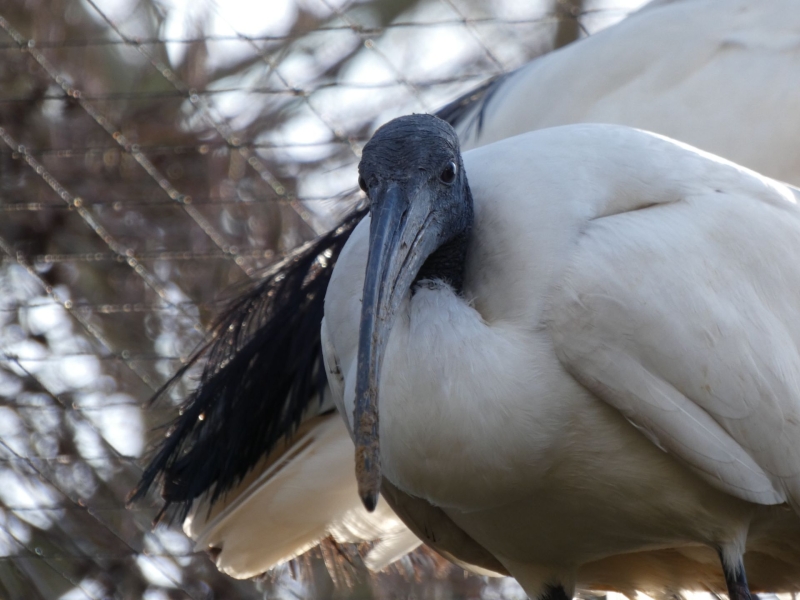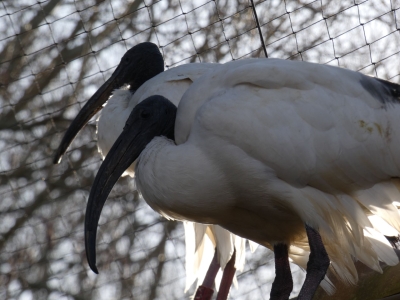African sacred ibis Threskiornis aethiopicus
Animals in our sanctuary
Amun
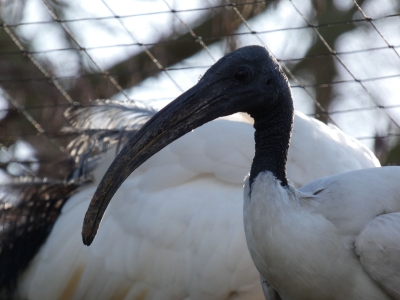
Amun is part of a group of sacred ibises that came from a zoo. As this species is on the list of invasive exotic species, breeding with it is no longer allowed. This means it is difficult for zoos to be able to relocate excess animals since few of them want this species in their collection. Fortunately, De Zonnegloed was able to give a positive answer.
Anubis
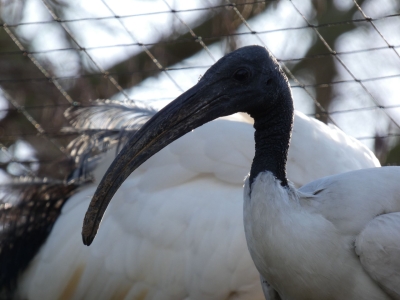
Anubis is part of a group of sacred ibises that came from a zoo. As this species is on the list of invasive exotic species, breeding with it is no longer allowed. This means it is difficult for zoos to be able to relocate excess animals since few of them want this species in their collection. Fortunately, De Zonnegloed was able to give a positive answer.
Aten
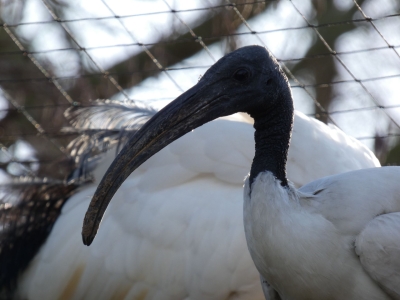
Aten is part of a group of sacred ibises that came from a zoo. As this species is on the list of invasive exotic species, breeding with it is no longer allowed. This means it is difficult for zoos to be able to relocate excess animals since few of them want this species in their collection. Fortunately, De Zonnegloed was able to give a positive answer.
Atum
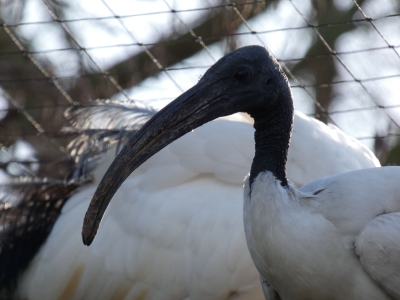
Atum is part of a group of sacred ibises that came from a zoo. As this species is on the list of invasive exotic species, breeding with it is no longer allowed. This means it is difficult for zoos to be able to relocate excess animals since few of them want this species in their collection. Fortunately, De Zonnegloed was able to give a positive answer.
Hapi
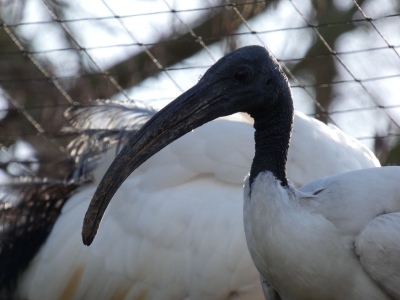
Hapi is part of a group of sacred ibises that came from a zoo. As this species is on the list of invasive exotic species, breeding with it is no longer allowed. This means it is difficult for zoos to be able to relocate excess animals since few of them want this species in their collection. Fortunately, De Zonnegloed was able to give a positive answer.
Horus
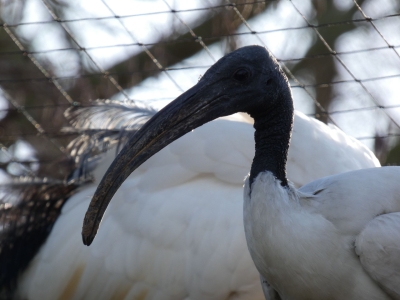
Horus is part of a group of sacred ibises that came from a zoo. As this species is on the list of invasive exotic species, breeding with it is no longer allowed. This means it is difficult for zoos to be able to relocate excess animals since few of them want this species in their collection. Fortunately, De Zonnegloed was able to give a positive answer.
Khepri
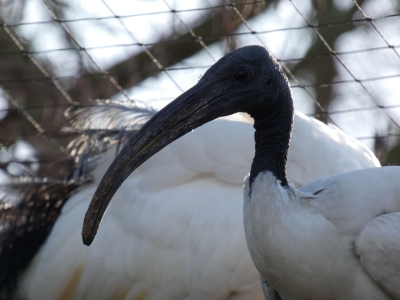
Khepri is part of a group of sacred ibises that came from a zoo. As this species is on the list of invasive exotic species, breeding with it is no longer allowed. This means it is difficult for zoos to be able to relocate excess animals since few of them want this species in their collection. Fortunately, De Zonnegloed was able to give a positive answer.
Khonsu
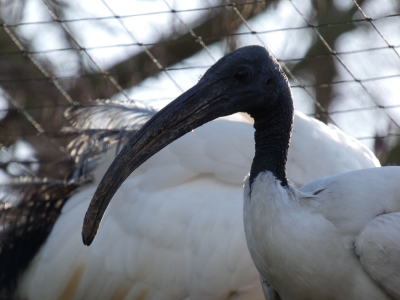
Khonsu is part of a group of sacred ibises that came from a zoo. As this species is on the list of invasive exotic species, breeding with it is no longer allowed. This means it is difficult for zoos to be able to relocate excess animals since few of them want this species in their collection. Fortunately, De Zonnegloed was able to give a positive answer.
Osiris
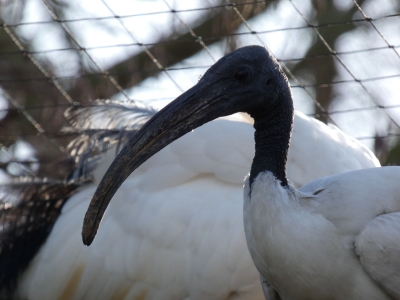
Osiris is part of a group of sacred ibises that came from a zoo. As this species is on the list of invasive exotic species, breeding with it is no longer allowed. This means it is difficult for zoos to be able to relocate excess animals since few of them want this species in their collection. Fortunately, De Zonnegloed was able to give a positive answer.
Ptah
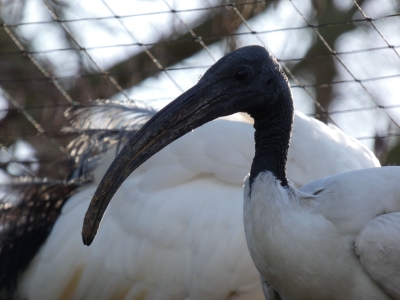
Ptah is part of a group of sacred ibises that came from a zoo. As this species is on the list of invasive exotic species, breeding with it is no longer allowed. This means it is difficult for zoos to be able to relocate excess animals since few of them want this species in their collection. Fortunately, De Zonnegloed was able to give a positive answer.
Ra
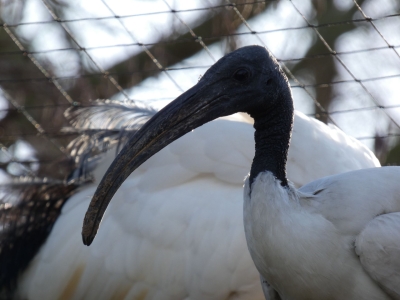
Ra is part of a group of sacred ibises that came from a zoo. As this species is on the list of invasive exotic species, breeding with it is no longer allowed. This means it is difficult for zoos to be able to relocate excess animals since few of them want this species in their collection. Fortunately, De Zonnegloed was able to give a positive answer.
Sobek
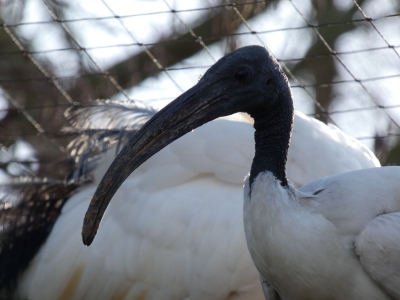
Sobek is part of a group of sacred ibises that came from a zoo. As this species is on the list of invasive exotic species, breeding with it is no longer allowed. This means it is difficult for zoos to be able to relocate excess animals since few of them want this species in their collection. Fortunately, De Zonnegloed was able to give a positive answer.
Thoth
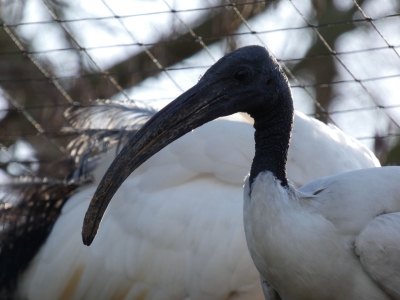
Thoth is part of a group of sacred ibises that came from a zoo. As this species is on the list of invasive exotic species, breeding with it is no longer allowed. This means it is difficult for zoos to be able to relocate excess animals since few of them want this species in their collection. Fortunately, De Zonnegloed was able to give a positive answer.
Where do I feel at home
Originally, the sacred ibis is found in sub-Saharan Africa and sporadically on the Arabian peninsula. There you can find them in all shallow water areas such as river banks, swamps and lagoons where they wade in search of food. In addition, you can also find them on rubbish dumps.
Sacred ibises are also found in large numbers in some regions of Europe, particularly in France, but in the Netherlands and Italy as well. This is duet o them being kept in local zoos, escaping there and able to reproduce in local nature. This is why they have been on the European list of invasive exotic species since 2016. These are exotic animals that cause significant damage to our own fauna and flora, and therefore need to be controlled. In addition, all these species are also no longer allowed to be bred or kept as pets. Other invasive exotic species in De Zonnegloed include raccoons, coati and Chinese muntjaks. The ibis is not yet found in Belgium.
What do I prefer to eat
Sacred ibises are opportunists and will eat anything they can get their beaks on. All kinds of insects, worms, crustaceans, shellfish and other invertebrates are eaten, as are small vertebrates such as fish, frogs, reptiles, birds and mammals. They also eat carrion, rob eggs from all kinds of animals such as pelicans, cormorants and monitor lizards.
They also go through rubbish looking for all kinds of scraps.
MORE INFO
Appearance
The sacred ibis can be recognised by its black, bald head and neck; white body and black rump. The crooked bill is typical of all species of ibis.
Fun facts
The sacred ibis is strongly linked to Thoth, the Egyptian god of writing, wisdom, science, magic, art and the moon. Thoth also judges the fate of the dead. He is always depicted with the head of an ibis. These animals were sacrificed to this god, thousands a year were mummified for religious purposes. It is strongly suspected that there were veritable farms to satisfy these needs. Today, sacred ibis are no longer found in Egypt.
There are several myths surrounding the bird. For instance, they are said to protect against winged serpents, drinking their poison and laying eggs from which basilisks can then emerge. Other stories tell that they reproduce with their beaks, and that their feathers can paralyse crocodiles and snakes.
In addition, they are said to at the foundation of the invention of the enema because they would perform it on hippos.
Reproduction in the wild
The sacred ibis will build a nest in a tree once a year between March and August. They are colony-forming, so a tree can have a lot of nests in its branches, including those of other species such as storks, spoonbills and herons.
A nest contains 2 to 5 eggs, which hatch after 21 to 29 days. Both parents take turns to keep them warm. After about 45 days, the chicks are independent enough to fend for themselves, but are not sexually mature until more than a year later.
Threats
The sacred ibis is not endangered. As already discussed, it is seen as a nuisance in some places where it occurs. Nevertheless, overall numbers are slowly declining.
Adopt this African sacred ibis


